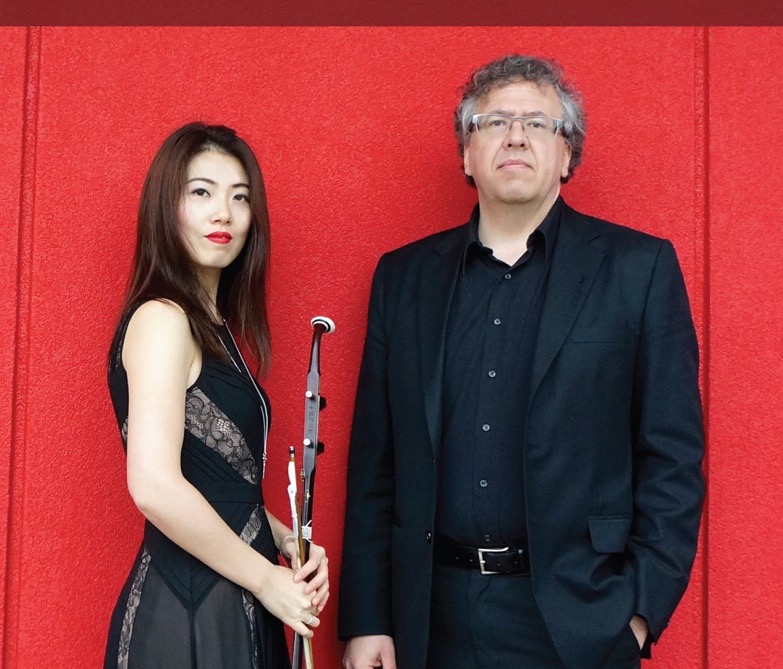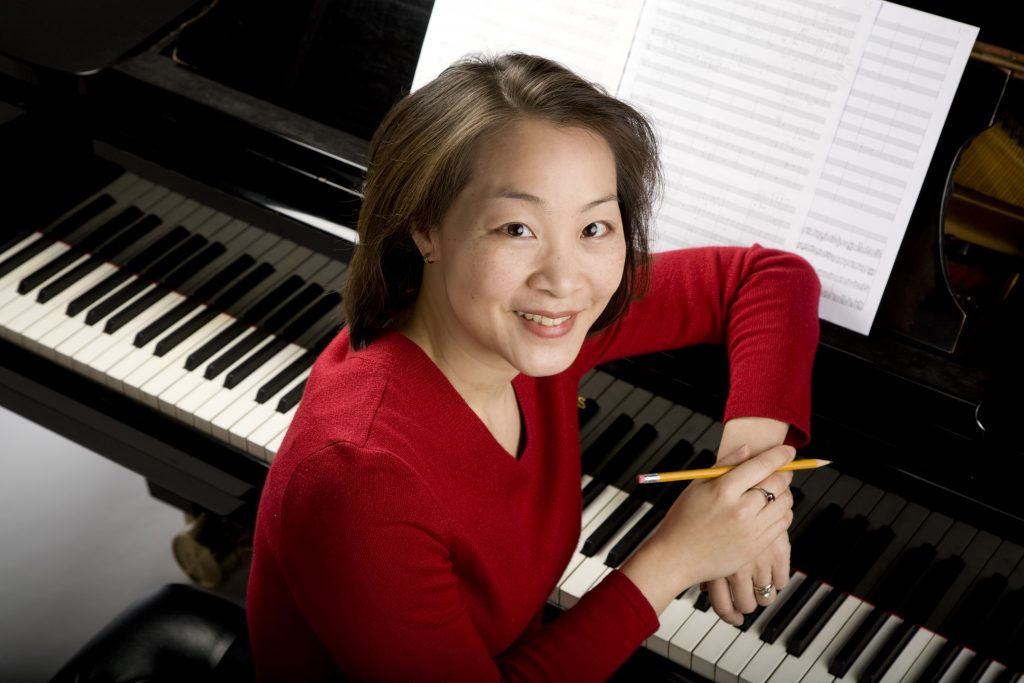By Philippa Kiraly, Special to The Sybaritic Singer
Photos provided by Philharmonia Northwest
In the past several years, the adventurous Seattle chamber orchestra Philharmonia Northwest has been including at least one concert of recently composed works, and most recently has embarked on commissioning them itself. The latest of these, Chinese/American composer Dorothy Chang’s Gateways, a concerto for erhu and piano, received its premiere Sunday, March 3, 2019 at St. Stephen’s Episcopal Church in Seattle‘s Laurelhurst district with the Vancouver, B.C.-based duo of Nicole Ge Li, erhu, and Corey Hamm, piano.
The erhu is China’s equivalent of the violin but far older, having been brought to China in the 10th century from the north and near west. It’s as essential in any Chinese orchestra as a violin is in Western ensembles, equally expressive and often used as a solo instrument. One might try to describe its distinctive timbre as plaintive, more throaty than a violin, guttural in its lowest registers, having an intimate feel with a wide variety of ways it can sound depending on how the performer plays it. The two strings, played with a loosely strung bow, are usually tuned to the same D and A as on a violin, that is, a middle register, but there is no fingerboard and the tone and pitch are produced by the place and pressure of the finger on the string and the varying pressure of the bow.

Chang’s work appears to be the very first for this combination of solo instruments, and the erhu here was unobtrusively amplified to create an instrumental balance, since it is by itself a quiet instrument. A composer with many published and performed works under her belt, Chang created a seamless combination of sounds which gave the excellent soloists a chance to display each instrument’s individuality, both separately and together with the orchestra supporting them.
It was also a seamless combination of East and West. Although the three movements each had a Chinese basis—a pop song, old papers and photos from Chang’s heritage, a tune from her childhood—the concerto itself had a Western concerto structure of three movements, and the music seemed more cosmopolitan than having recognizable Chinese elements apart from the erhu’s timbre.

Before the concerto, music director Julia Tai introduced the composer who had the soloists briefly demonstrate various themes and samples from each movement and showed off some of the erhu’s capabilities.
And then the 21-minute concerto began. A fluid feel distinguished the first movement, the piano’s rippling runs blurred with continuous pedal giving it a gentle aura. The erhu’s dreamy melodic lines were punctuated by plucking in the string section and several brief solo moments from other instruments. Unfortunately, the almost continuously playing erhu was drowned by the orchestra whenever it played a full forte, a situation noticeable throughout the concerto. A large variety of percussion instruments—drums, crotales, woodblock, triangle, vibraphone—added plinks and burps, rolls and feathering as unobtrusive color throughout the work.
Long tremolos, slurs up and down the erhu strings and the rise and fall of soft long notes in the other instruments, along with a continued fluid element from the piano helped create a nostalgic feel to the second movement while a low rumble anchored it. The last movement, more of a contrast, had piano and erhu playing one-up-manship with a jerky, animated motif against an equally lively orchestra, fun despite the drowning out of the erhu when the concerto rose to a climax.
Chang’s is an attractive work, highly listenable and holding the attention, not at all avant-garde or way out, a good vehicle for bringing the erhu to the attention of western symphony audiences. It would be good to hear it again. Perhaps the orchestra will repeat in the future.
The concert’s well-designed program held only one work for the second half, Rimsky-Korsakov’s symphonic suite Scheherazade. This received a rousing, well played performance from the orchestra with excellent solo moments from different instruments, notably concertmaster Cecilia Archuleta. The church’s acoustics lend themselves to making a small orchestra sound much richer, more expansive, thanks to the reflecting capabilities of the stage area’s wooden backdrop.
 Philippa Kiraly has writing classical music criticism since 1980, for several newspapers in northern Ohio and Seattle, magazines, both local and national, and blogs. She is passionate about the importance of independent criticism for the fine arts, an art in itself which is dying with little interest by many publications and no longer a viable career for most. But writing for tickets is always worthwhile! Pippa is a keen gardener, a keen grandparent, and can get lost in a good book.
Philippa Kiraly has writing classical music criticism since 1980, for several newspapers in northern Ohio and Seattle, magazines, both local and national, and blogs. She is passionate about the importance of independent criticism for the fine arts, an art in itself which is dying with little interest by many publications and no longer a viable career for most. But writing for tickets is always worthwhile! Pippa is a keen gardener, a keen grandparent, and can get lost in a good book.
